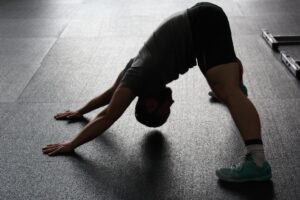The warm-up is the most important part of your workout. It prepares your mind, body, and muscles for the workout. When we were younger, we learned in gym class the importance of stretching prior to physical activity but perhaps stretching is not rigorous enough. What if there were an alternative method that targets the muscles you are about to exercise? I’m referring to dynamic stretching, a more efficient and systematic warm-up exercise. Continue reading to discover new methods for intensifying your warm-ups.
What is Dynamic Stretching Exactly?
I’m glad you asked! In brief, it is “stretching while moving.” High kicks, jump squats, jump lunges, and knee-to-chest are some examples. Static stretching is the type of stretching with which you are likely familiar. It requires only minimal movement, such as touching your toes.
How Does This Differ From a Conventional Warm-Up?
Simply put, it is more effective than standard stretching methods. When you engage in static stretching, you loosen your muscles, but it does not necessarily prepare them for the activity you are about to perform. It is more relaxed, which can induce relaxation in the mind. This can make the transition from rest mode to work mode challenging. Enhancing the range of motion around your joints with dynamic stretching reduces the risk of injury during exercise. Your performance will improve and you will be able to maximize your movements as your joints become more flexible over time.

How Can Dynamic Stretching Benefit Me?
What is so wonderful about it? I have already enumerated a number of distinctions in the preceding section; however, read on for more information. You’ll be glad you did.
This is a total body warm-up. It warms up your body faster than low-intensity aerobic activities like walking or running on a treadmill. It builds intensity and prepares the body for peak performance prior to the actual event. When you engage in a dynamic warmup, you help your body prepare for the demands that are about to be placed on it.
It enhances kinesthetic perception. It prepares the body for the various movements that will be performed. Dynamic stretching simulates the exercises you will perform during a workout in order to prepare your body for those movements. The ability to understand where your body is in time and space is kinesthetic awareness. Try touching the tips of your fingers together as an illustration. Having this awareness is crucial when exercising or playing a sport.
You will be much more adaptable! Flexibility is the joint’s range of motion. Dynamic stretching increases the range of motion of the joints, thereby enhancing performance and decreasing the risk of injury.
6 Simple Dynamic Stretches To Try For Maximum Benefits
1. A Lunge With a Turn
- Position your feet shoulder-width apart.
- The lunge position is achieved by advancing with the left foot.
- Leftwardly rotate your upper body from your torso. Then, reach across your left side with extended arms. (Imagine pointing to the left from your navel.)
- Maintain a slow, controlled pace throughout the duration of the exercise.
- Slowly move your arms to the center step forward with the opposite foot and twist to the other side.
2. Side Lunge Touching Heel
- Start with slightly bent knees and hips, feet hip-width apart, and an upright head and chest.
- Staying low, take a slow, lateral step to the right. Keep your toes pointed ahead and maintain a low stance. Extend the left knee, shift your weight to the right, and flex the left knee and hip to assume a side lunge position.
- Reach across with your left hand to touch your right heel or ankle as you lower yourself. Maintain good posture along the entirety of the spine, with the head and chest held high.
- Pause at the bottom of the motion, and then extend through the working leg to return to a standing position, transitioning into a lunge to the opposite side.
3. Arm Circles
- Raise your arms straight out to the sides while standing. The arms should be parallel to the floor and perpendicular to the torso (at a 90-degree angle). This position will be your starting point.
- Slowly begin to make circles of approximately 1 foot in diameter with each extended arm. Normalize your breathing while performing the movement.
- Continue the circular motion of the outstretched arms for about ten seconds. The motion is then reversed, moving in the opposite direction.
4. The Twisted Stretch of The Hips
- Begin in the push-up position with a flat back and hands and toes firmly planted on the ground.
- Bring one knee forward until the foot is flat on the ground directly behind the plane of your hands.
5. Low Kicks
- Extend your right arm in front of you in a parallel position to the ground. The palm of your hand should be facing the ground in a flat position.
- Step forward to shift your weight to your left foot, then flex the toes of your right foot and kick it up toward your hand. You must strive to touch your toes to your palm.
- Alternate legs with each repetition.
6. Jump Squats
- Separate your feet by shoulder width.
- Start with a standard squat, then engage your core and explode upwards.
- When landing, return to the squat position to complete one repetition. Land as quietly as possible, which requires control.
- Perform two or three sets of 10 repetitions.

The warm-up is the most essential part of a workout for mental and physical preparation. Dynamic stretching is an effective method of muscle stretching because it targets the muscles that will be used in the upcoming workout, making it a more efficient and systematic warm-up. Try these innovative techniques to enhance your warm-ups!
- Are there any sports or activities where dynamic stretching has significantly improved your performance?
If you enjoyed this blog post, share it with your friends!

